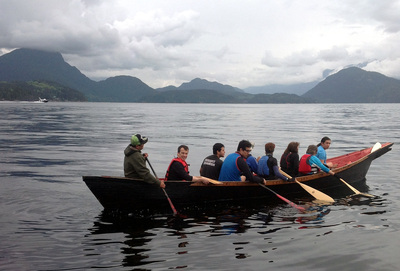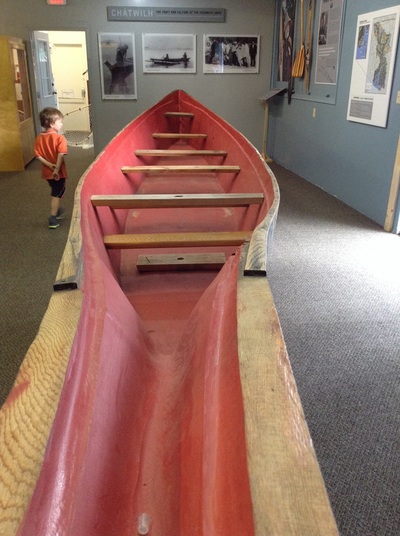A powerful example of this process has been our work with the Squamish Nation. In 2011 we opened the permanent exhibit Kwekwínmut/Pieces of the Past- Squamish Stone Artifacts from Ch’kw’elp and Shen’k. The exhibit was a culmination of over two years of work, starting with creating a much needed Aboriginal Materials Collections Policy. I then began meeting with Squamish community representatives, council members, archaeologists and curators to create partnerships. Through funding from the nation, we were able to work with a Squamish curator and an Advisory Committee to provide the context and interpretation of the pieces on display. From the oral histories and telling of the Squamish Origin legend in the Squamish language, to the bilingual labels, the exhibit provides insight into Squamish ways of knowing and connection to this land. This hidden history went from obscurity to center stage in the museum. The stone artifacts went from being simple tools to being windows into the past that allow us to gain a deeper understanding of Squamish culture. Visiting Squamish leaders, dignitaries, and Elders all spoke of no longer being invisible in their own territory, of coming home, and of their connection to this place. It was profoundly moving to be a part of this and was definitely a highlight in both my personal and professional life.
Last spring, we formed a partnership with the Squamish Lil’wat Cultural Centre in Whistler and began a year-long exhibit exchange - they borrowed our Kwekwínmut/Pieces of the Past exhibit in exchange for the exhibit Chátwilh: The Craft and Culture of the Squamish Canoe. Chief Ian Campbell graciously accepted the invitation to the opening of the exhibit last summer and spoke with eloquence about the interconnectedness of the canoe, the culture, and the importance of respecting and protecting the water and land for generations to come. Over the past year, we’ve had approximately 3,000 visitors and 144 Museum School students come through and engage with the exhibit!
The centre piece is the canoe called Stelkaya or “Striking Wolf”. Its chátwilh (canoe carver), Sessiyám (Ray Natraoro), is a member of the Wolf clan. A modern master of the ancient Squamish craft, Sessiyám carved this vessel from a single piece of ancient red cedar as a wedding gift for his wife. Carved over a period of two months in 2009, this hunting canoe, measures 8.5 meters (28 ft) long, 138 centimeters (54.5 in) across the beam, and weighs approximately 227 kilograms (500 lbs). It has traveled throughout the Salish Sea and taken part in two Tribal Canoe Journeys.
On the morning of Saturday, May 3rd, the canoe was launched from Gibsons harbor on a journey back to Mosquito Creek in North Vancouver where it will be used in preparation for its third Tribal Canoe Journey to Bella Bella this summer. For the first leg of this trip, skipper (and carver) Ray Natraoro, 4 members of his canoe family, and members of the Gibsons Paddle Club, took it on the three hour journey to Horseshoe Bay. They were met by a contingency of Cultural Ambassadors from the Squamish Lil’wat Cultural Centre, who joined in for the second leg of the trip to Mosquito Creek on the north shore.
The return of the canoe was an incredible example of community collaboration. Many people, from all walks of life, were involved in making the event come together so seamlessly. Thank you to the many organizations and individuals involved; to Chief Ian Campbell for curating the original exhibit; to Sarah Goodwin and Julie Baker from the Squamish Lil’wat Cultural Centre for the invitation to do the exhibit exchange; and to Wes Nahanee for taking the lead and embodying the role of cultural educator so graciously.
The canoe journey was an inclusive, humor-filled, and meaningful experience that brought people together and brought the canoe alive. It was an honour for me to be a part of this and exemplifies a valuable lesson in today’s world: great things happen when people work together.
- Kimiko




 RSS Feed
RSS Feed
